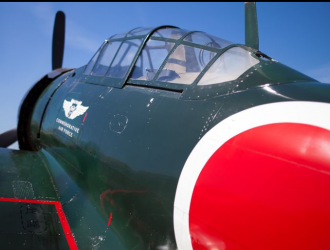
A day earlier, chief test pilot Mikhail Belyaev, who is RAC MiG's head of flight testing, had reported directly to President Vladimir Putin on the successful completion of initial flight tests of the UB combat trainer version of MiG-35, which was announced in 2005. Previously flown demonstrators and operational prototypes had “D” and “S” designations.
“Today, we present to you the renewed MiG-35, a technologically new product featuring advanced construction materials, longer lifetime and advanced avionics,” said RAC MiG general director Ilya Tarasenko.
Outwardly, the Side 702 and 712 versions do not differ much from Sides 741 and 747, flown in 2012-2013, and representing MiG-35D twin-seat and MiG-35S single-seat prototypes, respectively. The difference is based on the use of a more advanced “integrated electro-optical system,” which United Aircraft Corporation (UAC) general designer Sergei Korotkov described as “multispectral” because it uses sensors operating in multiple wavebands of the light spectrum. In his turn, UAC president Yuri Slyusar said the “renewed MiG-35” will also have a modern laser system, without being specific.
RAC MiG acknowledges that the MiG-35 makes use of “highly successful MiG-29 aerodynamics,” and that “the true innovations are inside rather than out.” The manufacturer offers the MiG-35 with a service life of 6,000 flight hours or 40 years, both figures representing records for MiG aircraft.
The MiG-35 relies on Klimov RD-33MK engines from the MiG-29K/KUB. An engine replacement can be completed in field conditions within 58 minutes, “which is one of the best figures in the world,” the manufacturer says.
With eight weapons stations, the MiG-35 can carry up to seven tons of unguided and guided weapons, including land-strike, anti-ship and air-to-air missiles. A specially developed PAZ-MK container allows for a type of “body stores” aerial refueling, with one MiG serving in a tanker role for other aircraft on a mission/strike group.
The current radar is the Zhuk-M with a slotted, mechanically steered antenna, but its developer Phazontron-NIIR is working on active electronically scanned array (AESA) versions—the Zhuk-A/AM—with thousands of solid-state transceiver modules. These radars are said to be capable of aerial target detection at a maximum distance of 160 km (99.4 miles) and simultaneous targeting of six aerial and four ground targets.
VKS commander Gen. Victor Bondarev said he intends to re-equip the “Swifts” air display group with MiG-35s. At the same time, he said that no firm order would be placed until experimental prototypes complete flight tests and demonstrate full compliance with VKS specifications. “The advertised performance figure for range is 3500 km [2,174 miles], which is fine and meets our expectations,” he said. Bondarev also said he is satisfied with the Zkuk-M’s advertised range of 160 km, and that “we will consider and buy more advanced radars should they appear.”
Russia’s new State Armament Program—effectively, a long-term weapons procurement program—calls for MiG-35 deliveries to the VKS, according to Slyusar. He said shipments will begin in 2019, but he declined to specify how many aircraft are on order. Depending on sources, the number is estimated at between 30 and 70. Slyusar added that export shipments can begin in 2020 if a foreign order is secured. Currently, there are no officially confirmed international orders for the MiG-29/35 family. Egypt is reportedly seeking to procure several dozen MiGs using either a credit line from Moscow or Saudi funding.
Tarasenko said RAC MiG’s backlog stands at $4 billion, without specifying what comprises the backlog. He said the company has shipped all MiG-29SMT/UB land-based multirole fighters—apparently under a 2014 order for 16 from the Russian VKS aviation and space force—and MiG-29K/KUB deck fighters under an Indian navy order for 45 units and Russian navy order for 24. The final shipments took place last year.



